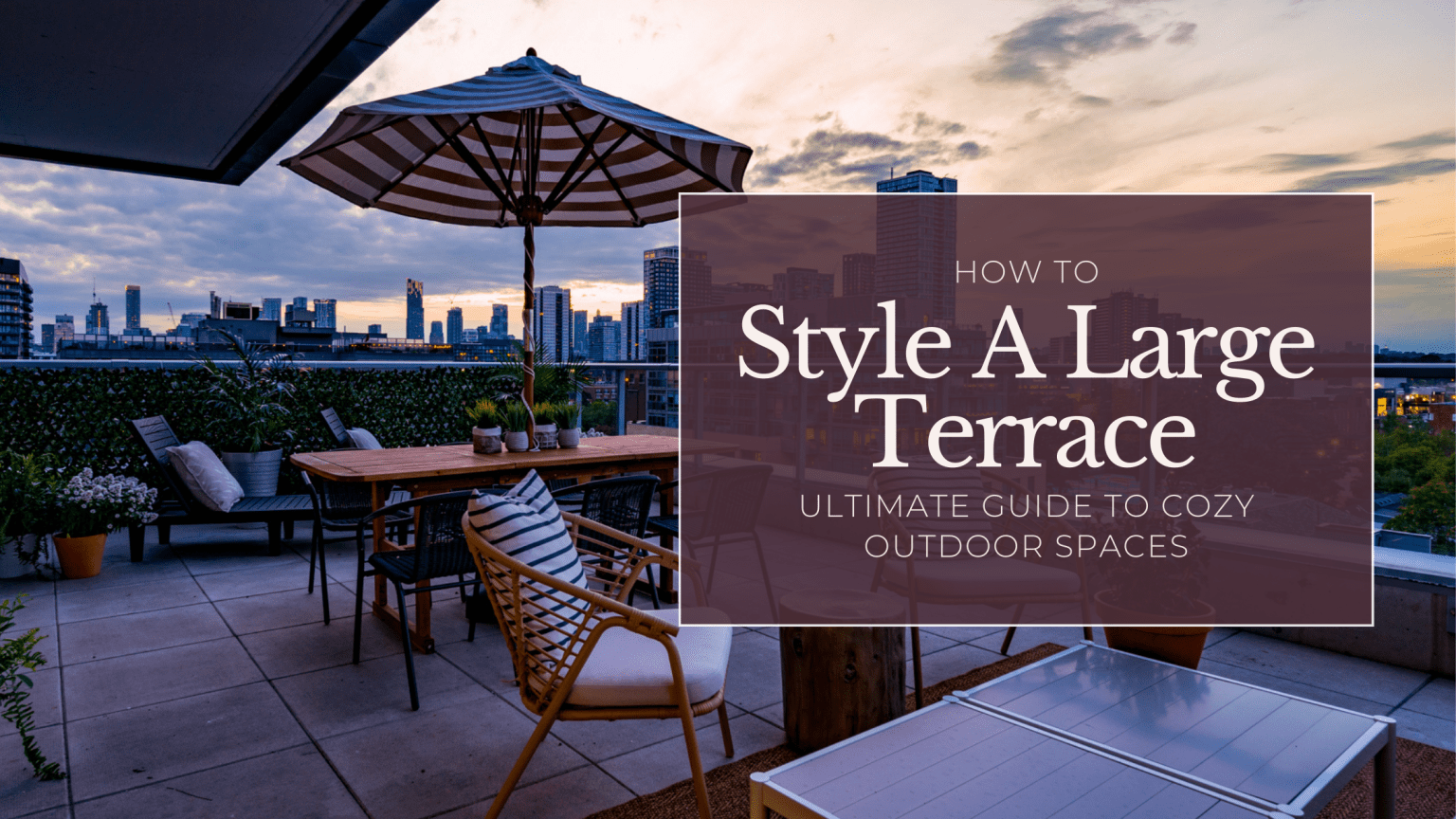In the realm of home decor, large terraces represent a unique canvas – vast, open, and brimming with potential. This guide is dedicated to unveiling the myriad of ways in which we help you style large terraces that can be transformed into vibrant, functional, and aesthetically pleasing areas, perfect for various occasions and personal enjoyment.
Table of Contents
Assessing Your Space:
- Understanding Terrace Dimensions:
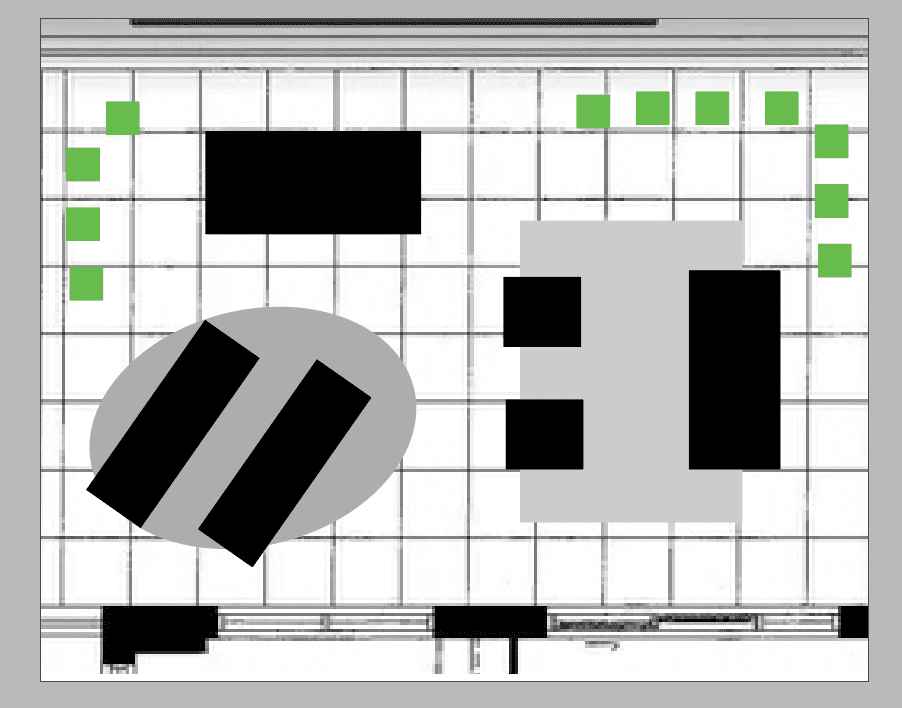
– Space Measurement: Start by accurately measuring the dimensions of your terrace. This includes length, width, and noting any irregular shapes or features like built-in planters or steps.
– Spatial Planning: Use these measurements to plan the layout. Ensure there’s enough room for movement and that furniture doesn’t overcrowd the space. For an effective visual representation, we love using the Magic Plan App or a simple design software like Illustrator to visualize the placement of different elements. Consider these tools to create a detailed and accurate layout of your terrace space.
- Analyzing Sunlight and Exposure:
– Sunlight Patterns: Observe the sunlight patterns throughout the day. Identify areas that receive full sun, partial shade, or full shade. This knowledge is crucial for selecting plants and determining seating areas.
– Sun Protection: In areas with intense sun, plan for structures like pergolas, umbrellas, or retractable awnings for protection.
- Weather and Climate Considerations:
– Material Selection: Choose materials based on your local climate. In areas with high humidity or frequent rain, opt for rust-resistant metals and quick-dry fabrics. In sunny and hot climates, materials that don’t heat up quickly, like natural stone or heat-resistant composites, are ideal.
– Weatherproofing: Consider weatherproofing solutions such as outdoor rugs that resist mildew, furniture covers, and drainage systems to prevent water accumulation.
- Wind and Privacy Factors:
– Wind Assessment: In windy locations, incorporate windbreaks such as tall plants, privacy screens, or glass barriers. This also adds an element of privacy.
– Furniture Stability: Choose heavier or anchored furniture pieces that won’t easily topple in windy conditions.
- Accessibility and Safety:
– Ease of Access: Ensure that the terrace is easily accessible, with paths clear of obstacles. Consider the needs of all potential users, including children and those with mobility challenges.
– Safety Measures: Incorporate safety elements, especially if there are elevated areas. This includes sturdy railings or barriers around the perimeter. If you have small children, ensure you have appropriate locks and that there is nothing near the edges that is climbable.
- Understanding Your Building’s Regulations:
– Compliance with Rules: If you live in an apartment or a managed property, check for any regulations or restrictions regarding terrace use. This might include rules about barbecues, installation of permanent structures, or weight limits. We love a hot tub on the terrace, but your building management might not!
Functional Zoning: A Strategic Approach to Terrace Design
The key to maximizing the potential of a large terrace lies in the concept of zoning. By thoughtfully segmenting the space into distinct areas dedicated to specific activities, one can craft a multifaceted environment that caters to a variety of needs and preferences. This strategic approach not only enhances the functionality of the terrace but also adds layers of visual interest and purpose.
1. Dining Zone: The Heart of Social Gatherings
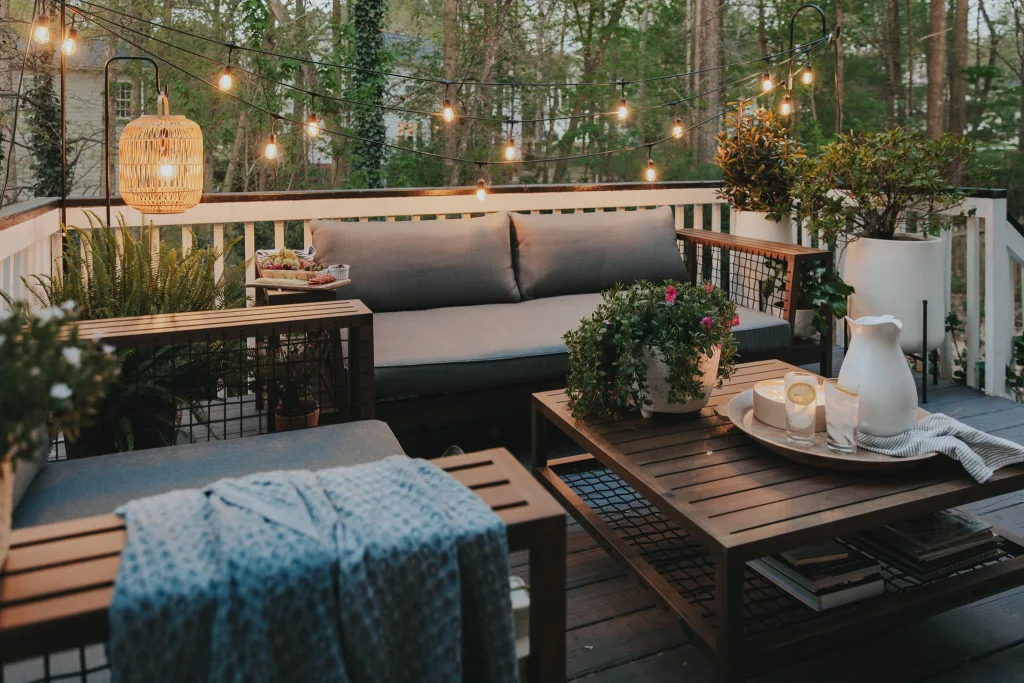

– Setting the Scene: The dining zone can serve as the centrepiece of your terrace. Selecting the right table and chairs is crucial. Opt for weather-resistant materials like teak, aluminum, or wrought iron. Consider the size of the table based on the typical number of guests.
– Ambience and Accessories: Add charm with outdoor-friendly tableware, cushions, and a centrepiece. Consider installing a retractable awning or umbrella for shade and comfort.
– Lighting: Choose ambient lighting such as pendant lights or a stylish outdoor chandelier to elevate evening dining experiences.
2. Lounging Area: A Nook for Relaxation
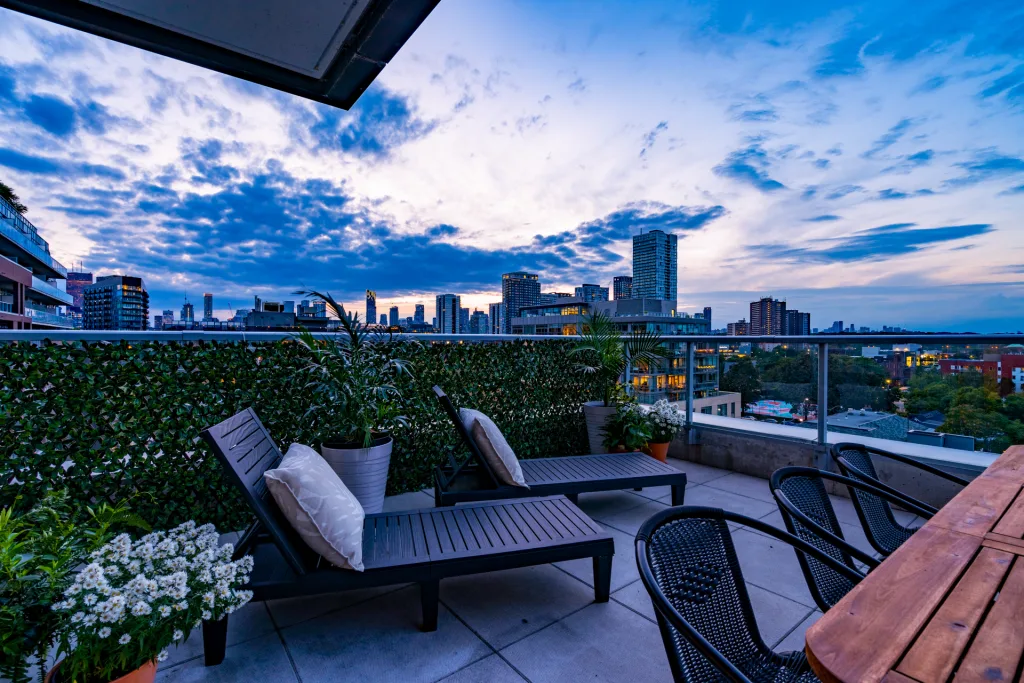

– Comfort is Key: Furnish with comfortable seating options like outdoor sofas, daybeds, or hammocks. Ensure cushions are plush and made with weather-proof fabric.
– Personal Touches: Include side tables for convenience, outdoor rugs for coziness, and throw blankets for chilly evenings.
– Creating Privacy: Use outdoor curtains or tall plants to create a more intimate and secluded space, perfect for relaxation or casual conversations. We love this option from Canadian Tire, which we used in one of our client’s condos.
3. Gardening Corner: A Green Retreat
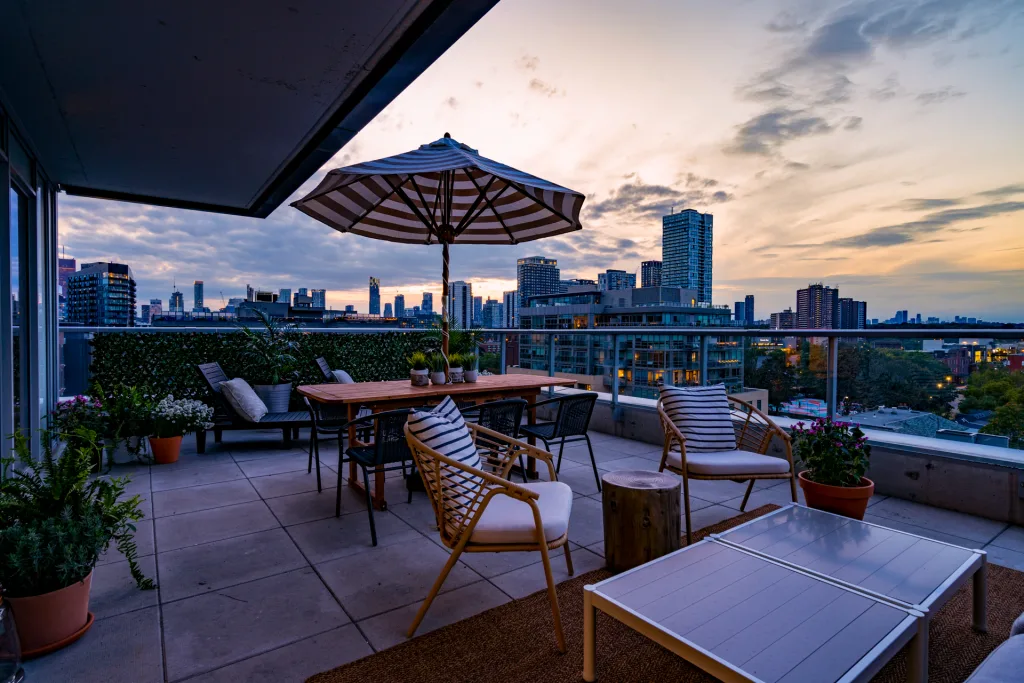

– Container Gardening: Utilize planters and pots to grow a variety of plants, herbs, or even small trees. This is particularly ideal for those with limited soil space.
– Vertical Gardening: Install wall-mounted planters or trellises to save floor space and add a green backdrop.
– Functional Decor: Integrate a small potting bench or a decorative watering can as functional yet aesthetic elements.
- Entertainment Hub: For Leisure and Fun
– Incorporating Technology: Set up an area with a weatherproof outdoor TV or a screen for projectors, ideal for movie nights or sporting events.
– Games and Activities: Consider space for games like table tennis, foosball, or a small putting green for golf enthusiasts.
- Exercise and Yoga Space: For Health and Wellness
– Designated Workout Area: Dedicate a zone for exercise with non-slip flooring and enough room for movement.
– Storage Solutions: Incorporate storage for yoga mats, weights, and other equipment, ensuring they blend seamlessly with the decor.
- Children’s Play Area: Safe and Fun
– Child-Friendly Zone: If kids are part of your household, designate an area with safe, durable play equipment or a mini sandbox.
– Visibility: Ensure this area is easily visible from other parts of the terrace for safety and supervision.
- Custom Zones: Tailoring to Your Lifestyle
– Personal Interests: Consider adding zones that reflect personal hobbies, like an outdoor painting studio, a reading nook, or a stargazing spot.
– Flexible Design: Use movable screens, planters, or furniture to modify these zones as per your current activity or mood.
Balancing Aesthetics and Functionality:
Creating a beautiful and functional terrace space involves a delicate balance between aesthetics and practicality. This balance ensures that while each zone has its unique purpose, the overall design remains cohesive and harmonious. Here are some key tips and ideas to achieve this balance:
1. Coherent Design Theme:
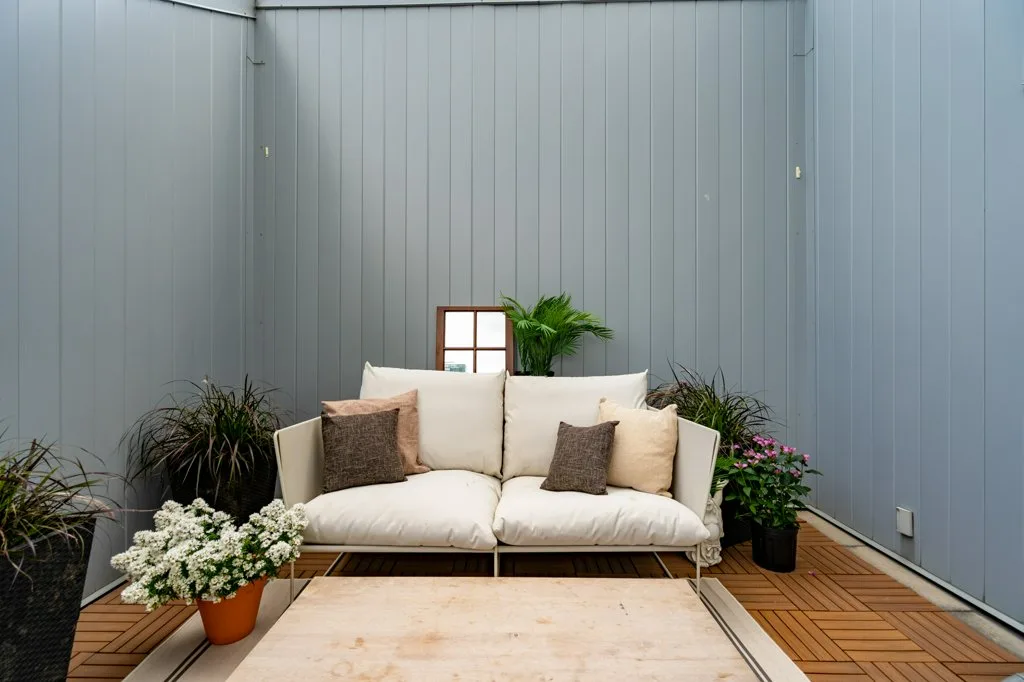

– Choosing a Theme: Start by selecting a design theme that reflects your personal style and the architecture of your home. This could be anything from a Mediterranean oasis to a minimalist modern look.
– Implementing the Theme: Carry this theme across all zones through consistent use of colors, materials, and decorative styles. For example, in a bohemian-themed terrace, use vibrant textiles, natural materials, and eclectic furnishings throughout.
- Seamless Transitions Between Zones:
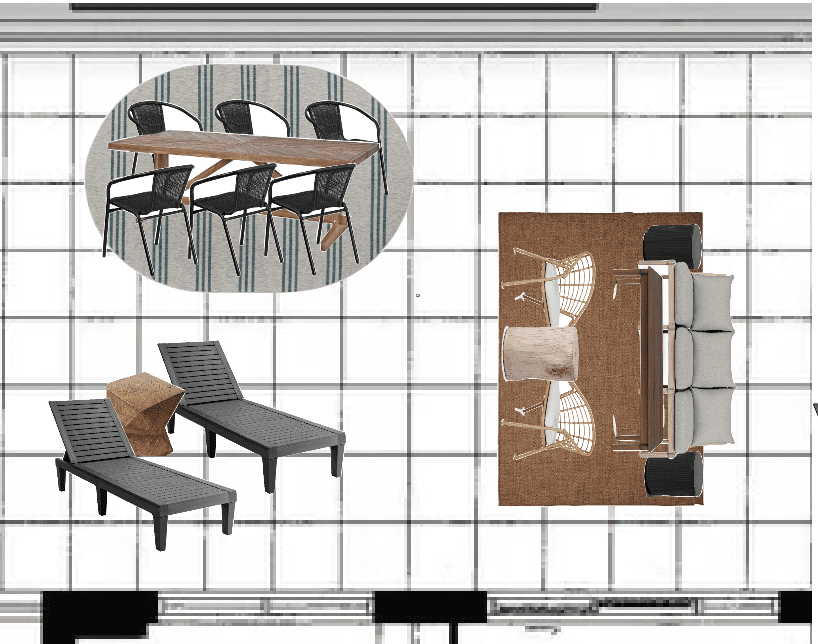

– Using Rugs and Flooring: Define each area with rugs or different flooring materials to visually separate spaces while maintaining a flow. For instance, wooden deck tiles can designate the dining area, while a soft outdoor rug can delineate the lounging space.
– Tip: Choose rugs and flooring that complement each other in colour and texture to maintain a sense of unity.
- Functional and Aesthetic Lighting:
– Strategic Lighting Placement: Use lighting to both illuminate spaces for their intended use and to enhance the overall ambiance. For example, brighter task lighting for the cooking area and softer, warmer lights for the lounging area.
– Decorative Lighting Elements: Incorporate decorative lighting fixtures that align with your design theme, such as lanterns, string lights, or modern LED strips.
- Unified Color Palette:
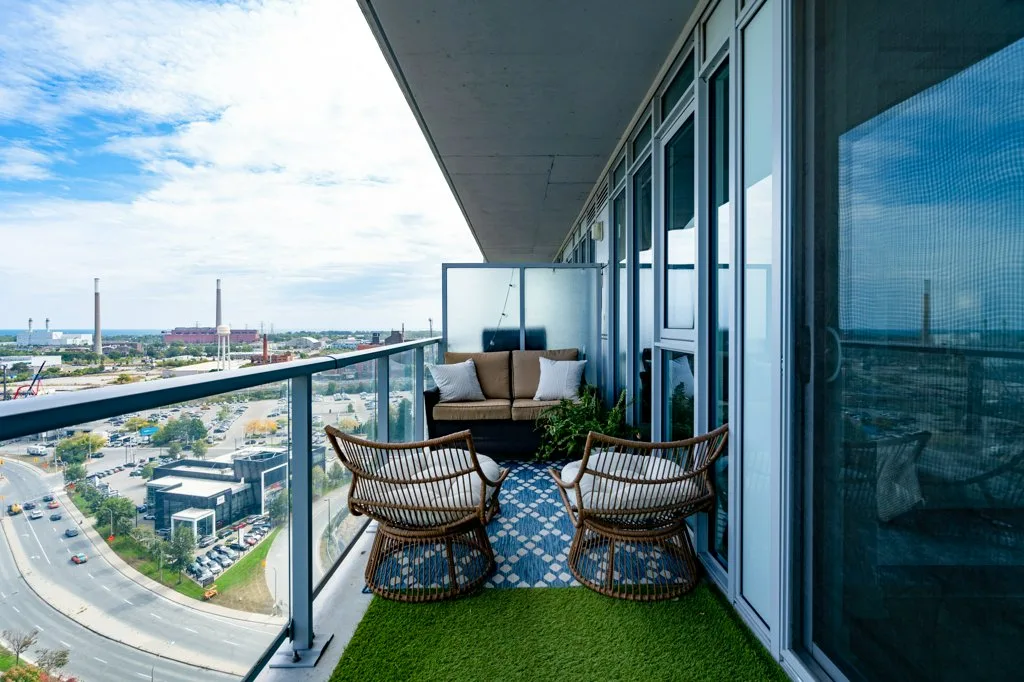

– Selecting Colors: Choose a colour palette that ties all zones together. This could be a combination of two to three main colors, accented with complementary shades.
– Applying Colors: Distribute these colours throughout the terrace in furniture, cushions, planters, and decor items. For instance, if your palette includes blues and greens, you might have blue cushions in the lounge area and greenery throughout.
- Decorative Elements that Serve a Purpose:
– Multi-functional Decor: Opt for decor that is both beautiful and functional. A sculptural fire pit, for example, can be a stunning focal point while also providing warmth.
– Consistency in Decor: Ensure that decorative items, from planters to artwork, are in line with the overall aesthetic while serving their functional purpose in each zone.
- Integrating Nature and Comfort:
– Incorporating Plants: Use plants not just as decorative elements but also as natural dividers or privacy screens between zones. Choose plant varieties that fit your theme and local climate.
– Comfort in Every Zone: Ensure that each area is comfortable and inviting, with adequate seating, shade, and amenities like heating or cooling as needed.
Furniture and Decor: Crafting the Atmosphere
- Multi-Functional Furniture:
– Example: A sleek, modern coffee table that can be extended into a dining table for parties.
– Tip: Measure your space carefully to ensure that furniture can be moved or expanded as needed.
- Sustainable and Durable Materials:
– Example: Chairs and tables made from recycled ocean plastics, offering both eco-friendliness and a unique talking point.
– Tip: Check for certifications or labels that guarantee sustainability and durability.
- Artistic and Cultural Decor:
– Example: Install a mural by a local artist or display cultural artifacts that tell a story.
– Tip: Choose weather-resistant paints or finishes to protect artwork from the elements.
Lighting and Ambiance: Setting the Mood
- Smart and Layered Lighting:
– Example: Combine solar-powered path lights with dimmable LED overheads and accent spotlights highlighting key features.
– Tip: Use a mix of cool and warm lights to create different zones and moods.
- Themed Lighting Arrangements:
– Example: For a Mediterranean theme, use terracotta lanterns with flickering LED candles.
– Tip: Choose lighting fixtures that match your terrace’s theme for a cohesive look.
Plant Life and Greenery: A Touch of Nature
1. Edible Gardens and Colorful Plants:
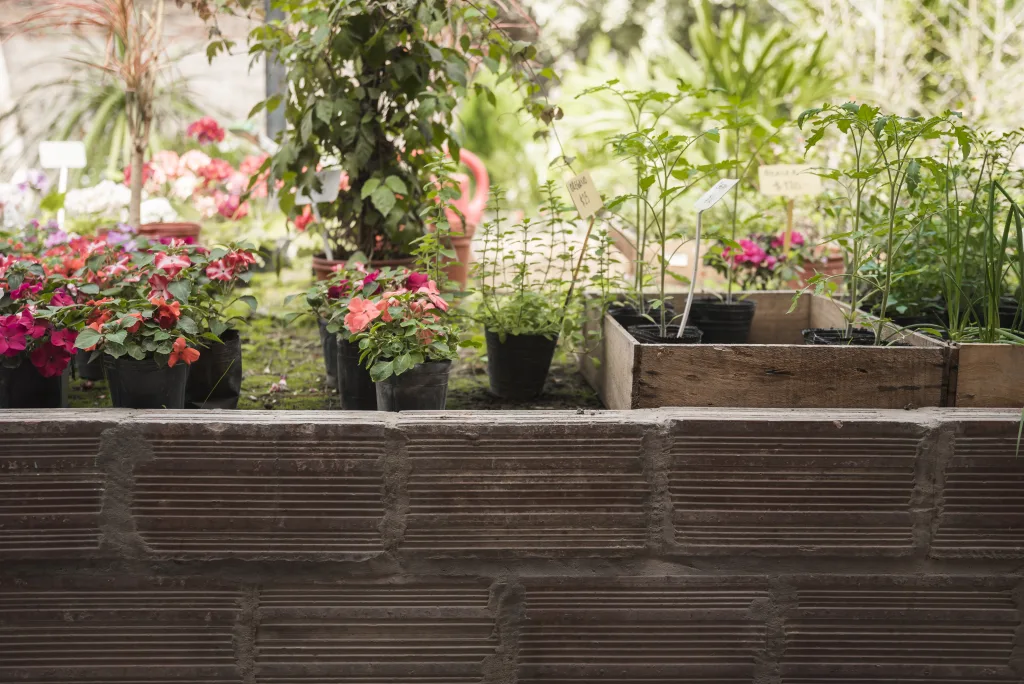

– Example: Grow herbs like basil and rosemary in small pots, and add seasonal flowers for color.
– Tip: Use vertical planters to save space and create a living wall of greenery.
- Artistic Greenery:
– Example: Incorporate sculptural plants like agave or a bonsai tree as natural art pieces.
– Tip: Position these plants where they can be a focal point and easily seen.
Hosting and Entertainment: The Art of Outdoor Gatherings
1. Flexible Hosting Spaces:
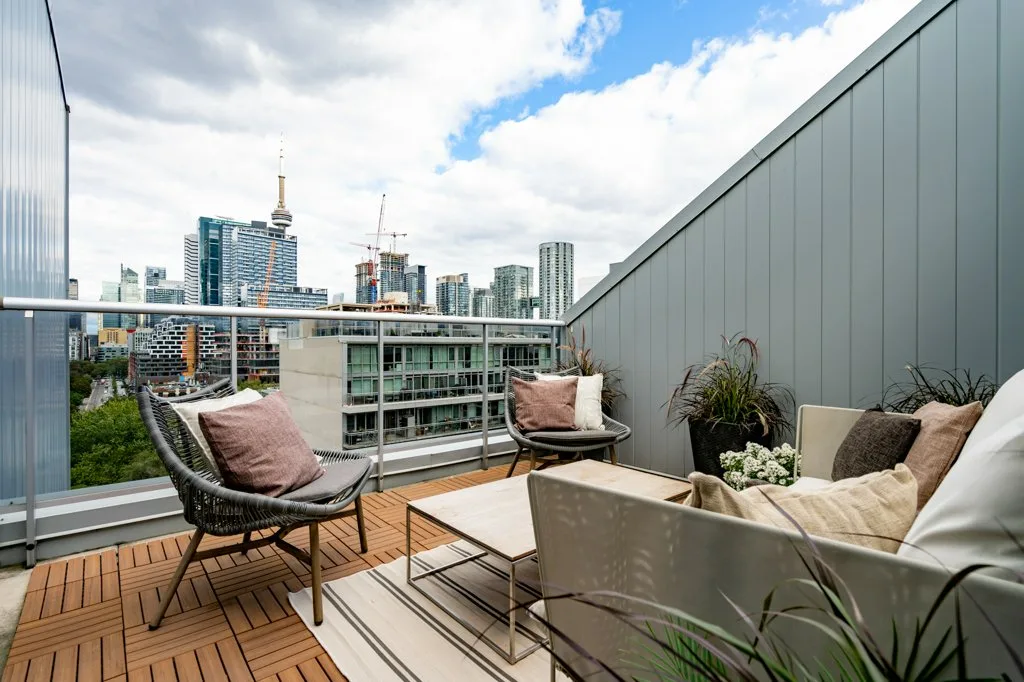

– Example: Use modular seating that can be rearranged from a cozy circle to a larger party setting.
– Tip: Invest in lightweight furniture that can be easily moved and stored.
- Outdoor Cooking and Interactive Entertainment:
– Example: Set up a portable wood-fired pizza oven for interactive cooking sessions.
– Tip: Ensure that your outdoor cooking equipment is placed in a well-ventilated area.
Seasonal Decorations: Adapting and Protecting
- Interchangeable Decor Elements:
– Example: Use slipcovers for cushions in different seasonal patterns and colors.
– Tip: Store off-season decor in waterproof bins to keep them in good condition.
- Weather-Proof Celebratory Decorations:
– Example: Use LED fairy lights and waterproof fabric banners for holiday decorations.
– Tip: Choose decorations that are easy to set up and take down, maximizing their usability.
Personalizing Your Space: A Reflection of You
- Personal Art and Memory Displays:
– Example: Create a mosaic tile piece as a tabletop or a display shelf for travel souvenirs.
– Tip: Use materials that are suitable for outdoor exposure to ensure longevity.
- DIY and Upcycling Projects:
– Example: Turn an old ladder into a vertical garden stand or a wooden pallet into a rustic lounge chair.
– Tip: Use outdoor-grade paints and finishes to protect your DIY projects.
Conclusion: Crafting Your Terrace Oasis
In crafting your terrace oasis, the goal is to create a space that is not only visually pleasing but also deeply personal and functional. These expanded suggestions and tips offer a roadmap to achieve that balance, encouraging you to explore and experiment. Remember, the best terrace spaces evolve over time, reflecting the changing tastes and lifestyles of those who use them. So, embrace the process, and watch as your terrace becomes a cherished extension of your home. Contact us today to create a beautiful space for your next home sell!


Pierre Carapetian
Pierre Carapetian is the Broker Of Record for Pierre Carapetian Group Realty with over 12 years of experience in the real estate market. As a proud Torontonian and real estate broker, he prides himself on knowing this city inside out. He started investing at the age of 18 and has facilitated over half a billion dollars in real estate transactions.
Frequently Asked Questions:
How To Style A Large Terrace: The Ultimate Guide to Cozy Outdoor Spaces
When selecting furniture for outdoor use, focus on materials that are inherently weather-resistant. Metals like aluminum and wrought iron are great options as they resist rust and can handle varying temperatures. Woods such as teak, cedar, and eucalyptus are excellent for their natural oils that repel water and prevent decay. For synthetic options, high-density polyethylene (HDPE) resin is superior due to its durability and resistance to fading, cracking, and peeling. Additionally, look for furniture with powder-coated finishes as they offer extra protection against the elements. Always check the manufacturer’s recommendations for outdoor use and maintenance tips to ensure longevity.
What are some budget-friendly ways to decorate a large terrace?
Decorating a large terrace on a budget can be both creative and fun. Start by exploring DIY projects, like creating your own outdoor cushions or refurbishing a second-hand outdoor table. Repurposing indoor furniture for outdoor use is another cost-effective strategy – just make sure to treat the furniture with weather-resistant varnish or paint. Adding outdoor rugs made from recycled materials can also bring color and texture to your terrace without a hefty price tag. Consider homemade planters made from upcycled materials like old tires, wooden crates, or even concrete blocks. String lights, paper lanterns, and homemade wind chimes are other inexpensive ways to add charm. Remember, plants can be an affordable and lively addition – seek out local plant swaps or propagate from existing plants.
Can I use my terrace throughout the year?
Absolutely! To enjoy your terrace year-round, it’s important to adapt it to different seasons. For colder months, consider adding a fire pit, heat lamps, or an outdoor fireplace to create a warm and cozy atmosphere. Weatherproof covers and enclosures can protect your space from rain and snow. During warmer seasons, umbrellas, shade sails, or a pergola can provide necessary sun protection. Using weather-resistant furniture and decor ensures they withstand various weather conditions throughout the year. Seasonal plantings can also enhance the space’s appeal, with evergreens in winter and flowering plants in spring and summer.
How do I maintain privacy on my terrace?
Creating a private retreat on your terrace can be achieved in several stylish ways. Tall plants like bamboo, boxwood, or ornamental grasses can act as natural screens while adding greenery to your space. Privacy screens made of wood, metal, or weather-resistant fabric can be both decorative and functional. Installing a pergola or gazebo not only adds privacy but also elevates the overall look of your terrace. If you prefer something more flexible, consider outdoor curtains or retractable shades. These solutions not only enhance privacy but also contribute to the overall aesthetic and comfort of your terrace.


